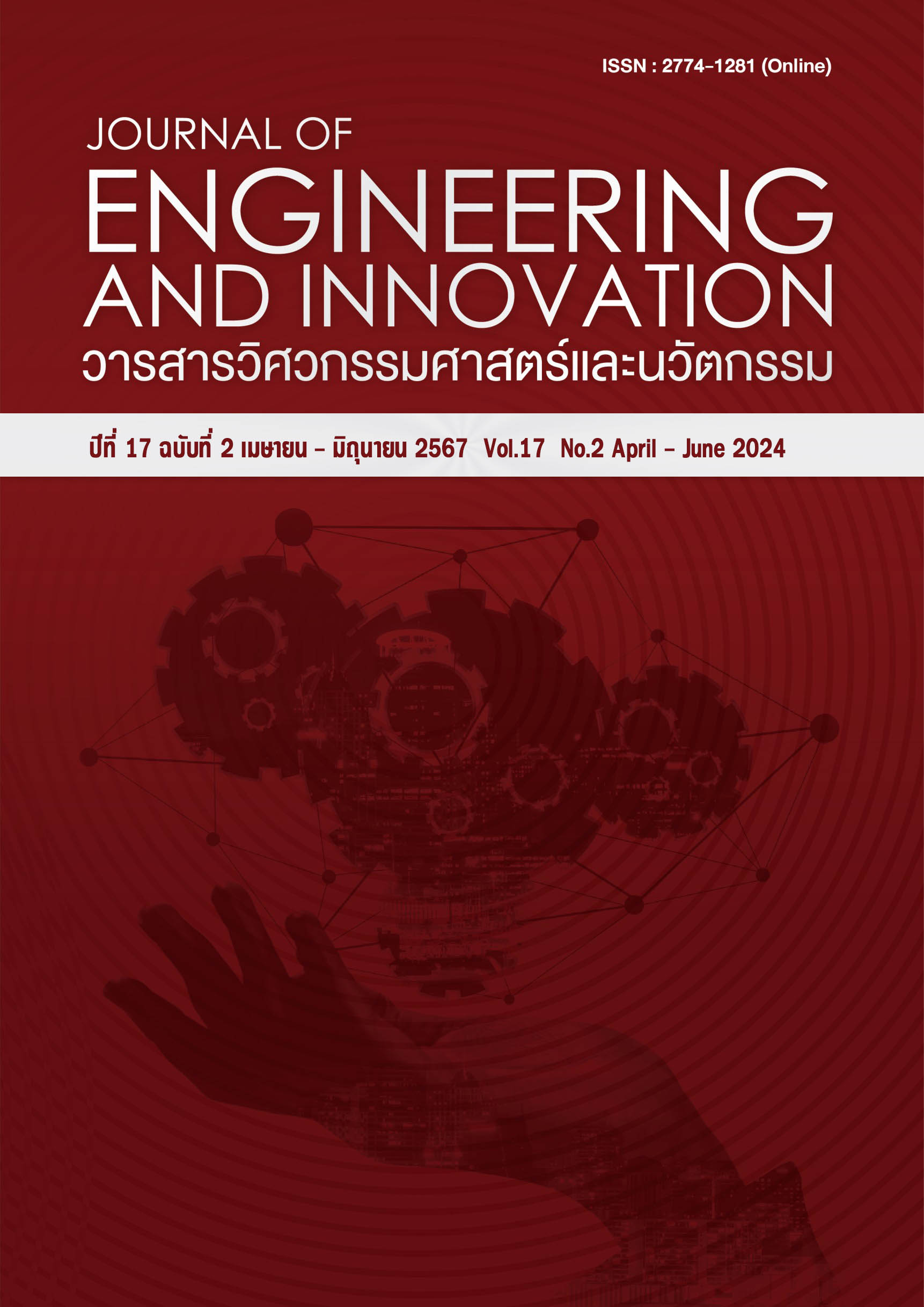Unconfined compressive strength development in recycled pavement base material improved by fly ash and calcium carbide residue geopolymer
Main Article Content
Abstract
This research investigates unconfined compressive strength development in recycled pavement base material improved by fly ash and calcium carbide residue geopolymer at curing times of 7, 14, 28, 60, and 90 days. This research studied the effect of liquid alkaline activator content comprised of sodium silicate (NS) and sodium hydroxide (NH) with NH concentration of 8 molars, the RCR:CCR:FA ratios, and the NS:NH ratios. The test result showed that the maximum dry unit weight of the RCR-CCR-FA geopolymer sample decreased as the FA increased due to the lower specific gravity of FA. The 7-day unconfined compressive strength increased as FA content increased due to the increased amount of Si and Al. Sample with optimum liquid alkaline content, RCR:CCR:FA ratio of 40:10:50 and NS:NH ratio of 2 gave the maximum unconfined compressive strength of 9.88 MPa. Based on the Department of Highways (DOH) standard, All ingredients passed the DOH standard. Furthermore, the proposed equation is beneficial for estimating the unconfined compressive strength of RCR-CCR-FA geopolymer when 28-day unconfined compressive strength was known.
Article Details
References
Suksiripattanapong C, Horpibulsuk S, Boongrasan S, Udomchai A, Chinkulkijniwat A, Arulrajah A. Unit weight, strength and microstructure of a water treatment sludge-fly ash lightweight cellular geopolymer. Construction and Building Materials. 2015;58: 254-257.
Suksiripattanapong C, Horpibulsuk S, Chanprasert P, Sukmak P, Arulrajah A. Compressive strength development in fly ash geopolymer masonsy units manufactured from water treatment sludge. Construction and Building Materials. 2015;82: 20-30.
Makaratat N, Laosamathikul T, Jaturapitakkul C. Utilization of calcium carbide residue –fly ash mixture as a cementing material in concrete. The 33rd Internaltional Association for Bridge and Structural Engineering. 2009;96: 144-149.
Amnadnua K. Tangchirapat W, Jaturapitakkul C. Strength, water permeability, and heat evolution of high strength concrete made from the mixture of calcium carbide residue and fly ash. Materials and Design.2013;51: 894-901.
Phetchuay C, Horpibulsuk S, Arulrajah A, Suksiripattanapong C, Udomchai A. Strength development in soft marine clay stabilized by fly ash and calcium carbide residue based geopolymer. Applied Clay Science. 2016;127-128: 134-142.
Phummiphan I, Horpibulsuk S, Sukmak P, Chinkulkijniwat A, Arulrajah A, Shen SL. Stabilisation of marginal lateritic soil using high calcium fly ash-based geopolymer. Road Materials and Pavement Design. 2016;17(4): 877-891.
Phummiphan I, Horpibulsuk S, Phoo-ngernkham T, Arulrajah A, Shen SL. Marginal Lateritic Soil Stabilized with Calcium Carbride Residue and Fly Ash Geopolymers as a Sustainable Pavement Base Material. Materials in Civil Engineering. 2017;29(2): 1-10.
Rattanasak U, Chindaprasirt P. Influence of NaOH solution on the synthesis of fly ash geopolymer. Minerals Engineering. 2009;22: 1073-1078.
Chindaprasirt P, Chareerat T, Sirivivatnanon V. Workability and strength of coarse high calcium fly ash geopolymer. Cement and Concrete Composites. 2006;29(3): 224-229.

